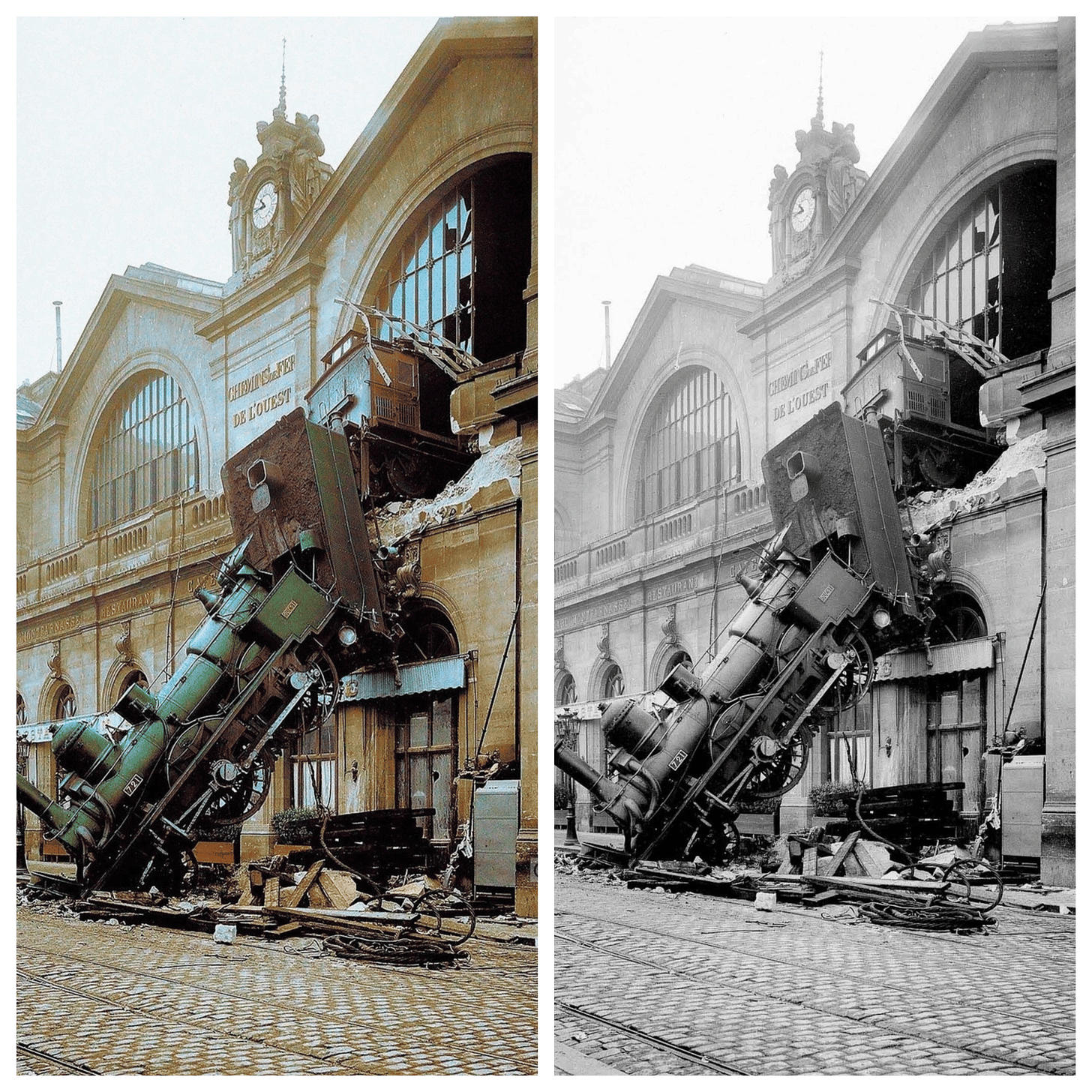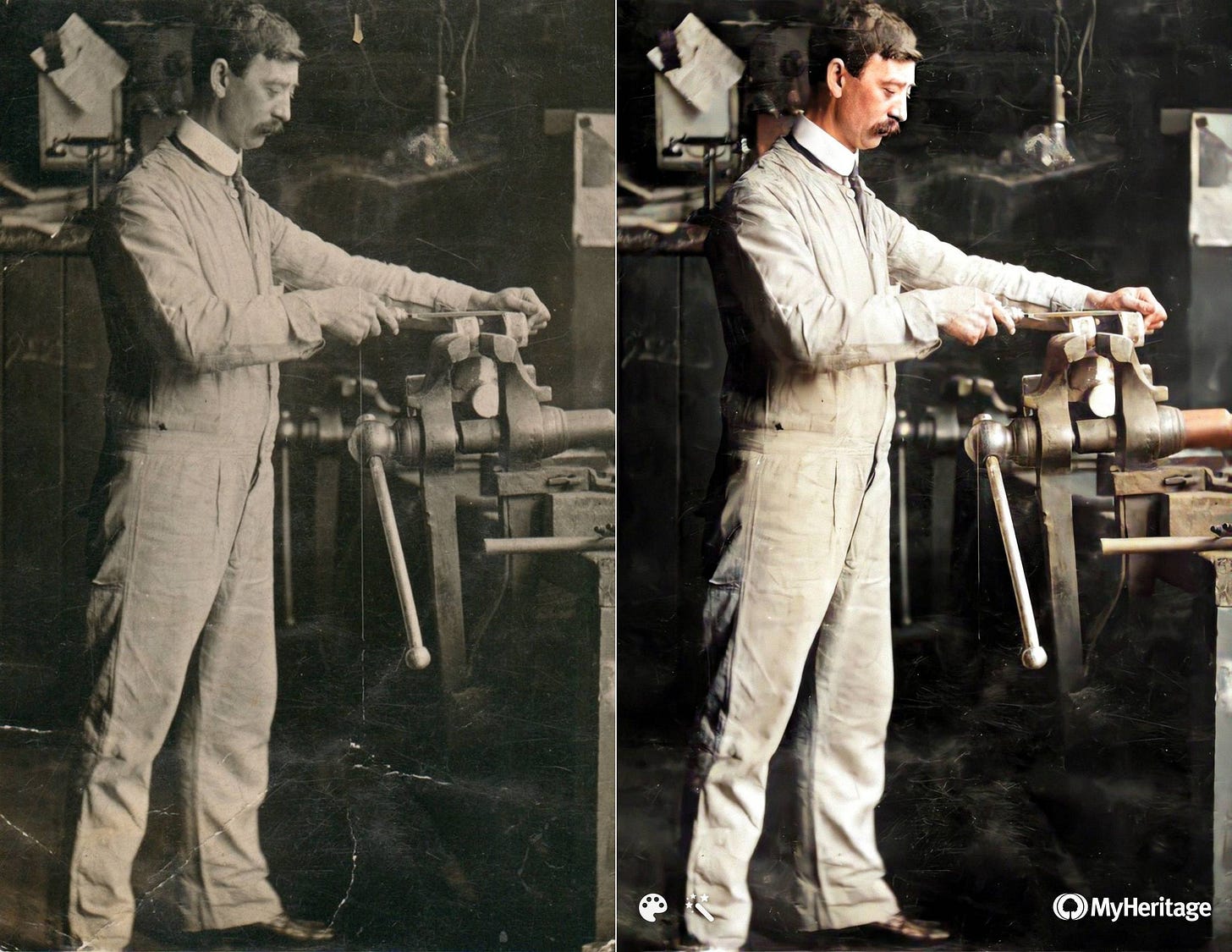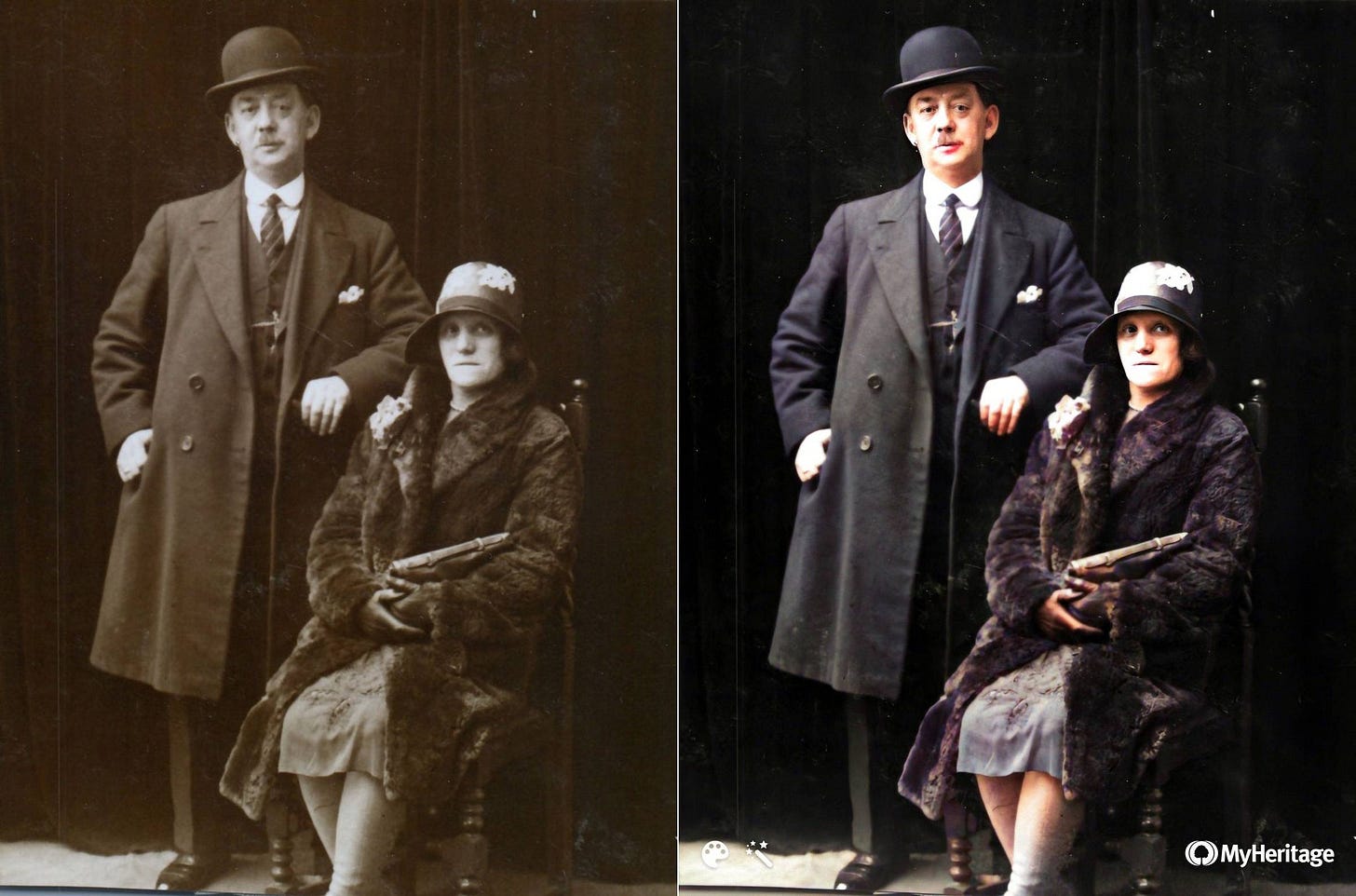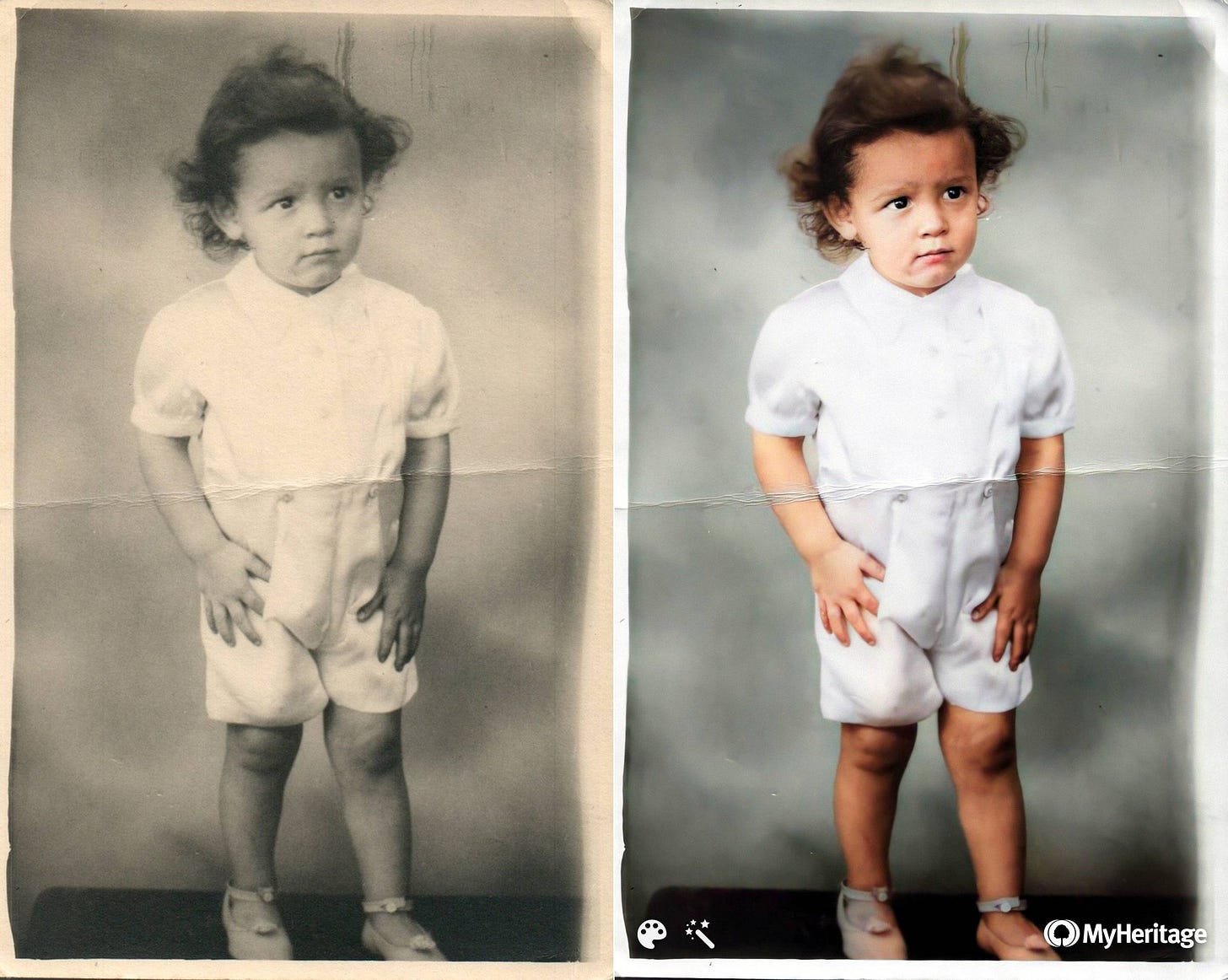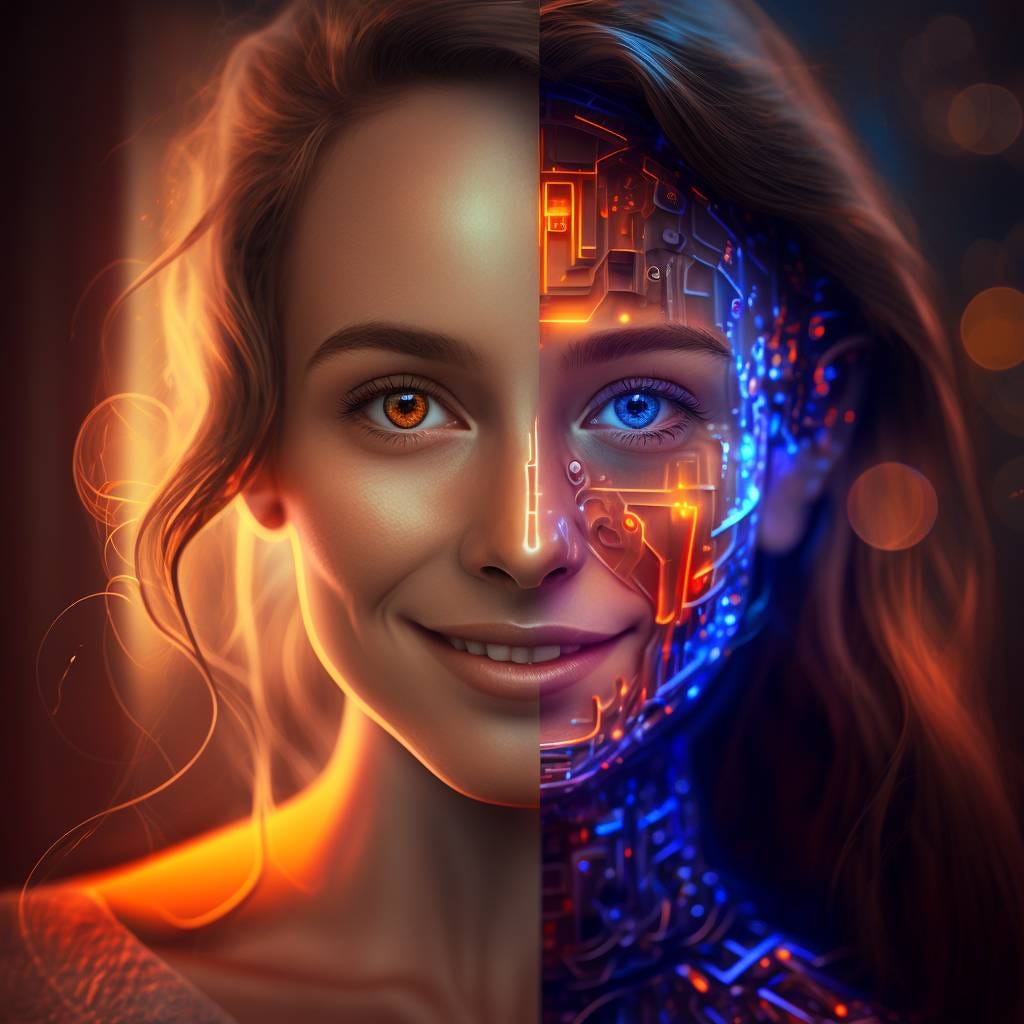Sunday Signal: COLOUR, TRUST & THE MACHINES THAT CODE
Welcome to The Sunday Signal — a weekly look at how technology shapes our world and what that means for all of us. Issue #5 18 May 2025
⏱️ 5 min read
Welcome to The Sunday Signal — a weekly look at how technology shapes our world and what that means for all of us. This week, a 19th-century train crash sent me down a very personal rabbit hole. What followed was part history, part memory, part rediscovery. Also inside: why British companies must stop hoarding authority and start trusting their people — and whether developers will soon be replaced by AI conductors.
🎨 AI, MEMORY, AND FOUR GENERATIONS IN COLOUR
Some of the most moving uses of AI aren’t futuristic — they’re personal.
It started with a train crash.
In 1895, the Granville–Paris Express overshot Montparnasse Station. The air brake failed. The emergency brake came too late. The train smashed through the buffer stop, skidded across the concourse, burst through a metre-thick wall, and nose-dived ten metres to the street below.
I’d seen the photograph before. In black and white, it looked surreal — like a still from a silent film. But then I saw it colourised.
Suddenly, it wasn’t a relic. It was a moment.
The green locomotive, the beige stonework, the twisted iron — it all became real. Immediate. Emotional.
That one image led me to colourise some of my own.
Among them: my great-great-grandfather, Eli Richards, seated beside his wife, Lily, in a Sheffield garden. He ran a steel company in the city in the early 20th century — part of a generation that turned Sheffield into the steel capital of the world.
In 1940, during the Sheffield Blitz, Eli and Lily were killed by a Luftwaffe bomb that struck their home. Their gravestone reads:
“In Loving Memory of Our Dear Parents… killed by enemy action December 12 1940.”
I never met them. I never met my grandmother either — she appears in one photo, poised on a white bench. My father, just a boy in a white suit, looks on from another.
These people were always part of my story. But until I saw them in colour, I didn’t realise how distant they felt.
AI didn’t rewrite history. It gave it breath. And it gave me family I thought I’d never know.
We often talk about AI’s power to accelerate. But sometimes, its real gift is to slow us down — to help us see what’s always been there.
💼 GIVE TALENT REAL POWER — OR LOSE IT
Steve Jobs famously said:
“It doesn’t make sense to hire smart people and tell them what to do.”
But in Britain, we still haven’t fully learned that lesson, especially when it comes to women returning to work, older workers, or anyone with an unconventional CV.
In my latest column for The Yorkshire Post, I talk about what happens when companies give people real responsibility, not just a desk and a job title.
At Yorkshire AI Labs, one of our most impactful team members, Louise, had taken time out to raise her daughter. Within days of re-entering the workplace, she was leading projects, closing deals, and making the rest of us sharper.
Jobs knew this in 1985. Apple ignored him and pushed him out. He returned, rebuilt the company around empowered talent, and made it the most valuable business in the world.
Talent doesn’t just want to be hired. It wants to be trusted.
🤖 WILL YOUR NEXT DEVELOPER BE AN AI?
We’re rapidly moving from “coding with help” to “not coding at all.”
Stanford’s AI Index shows code generation accuracy has jumped from 4.4% to 71.7% in just one year. GitHub Copilot, Claude, GPT-4 — these tools don’t just assist developers anymore. They are developers.
Except they hallucinate. They misread context. They leave security holes.
We’re not replacing engineers, but we are changing the job.
The future developer may not be writing code — they’ll be reviewing it, refining it, and telling an AI what not to do.
I came across this sharp piece in The Register that asked a timely question:
In five years, will we still refer to “software engineers” or “AI conductors”?
🧭 FINAL THOUGHTS: PROGRESS WITHOUT PEOPLE ISN’T PROGRESS
This week’s stories — a colourised photograph, rewarding employees properly, and a machine writing code — all come back to one question:
What happens when we remember to put people at the centre of progress?
We talk a lot about what technology can do. But the real question is: what do we want it to do?
To accelerate decisions — or deepen understanding?
To replace effort — or multiply human potential?
AI is not a threat or a saviour. It’s a tool. And like all tools, it reflects the values of its creators. That’s us.
When we use AI to revive a family photo, we reconnect with the lives that shaped us.
When we trust people with real responsibility, we unlock brilliance that would otherwise stay hidden.
And when we guide the tools — instead of letting them guide us, we build something truly worth passing on.
Progress isn’t measured by what we automate. It’s measured by who it empowers.
Let’s keep the human part of the future firmly in focus — not as a nostalgic nod to the past, but as a clear-eyed commitment to what matters most.
Thanks for reading,
— David Richards
David Richards MBE is a technology entrepreneur, educator, and commentator. The Sunday Signal offers weekly insights at the intersection of technology, society, and human potential.
© 2025 David Richards. All rights reserved.


